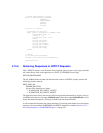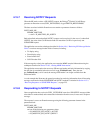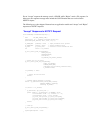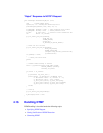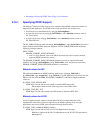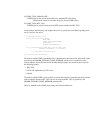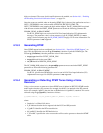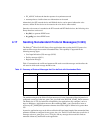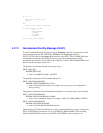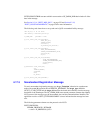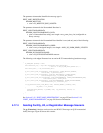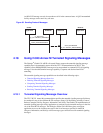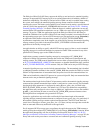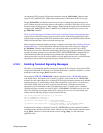
• EV_ASYNC indicates the function operates in asynchronous mode
• userattr points to a buffer where user information can be stored
Alternatively, the IPT network device and IP Media device can be opened without the voice
resource, and the IP line device can be routed to the voice device when needed.
Once the voice resource is attached to the IPT network and IPT Media devices, the following voice
library functions can be used:
• dx_dial( ) to generate DTMF tones
• dx_getdig( ) to detect DTMF tones
4.17 Sending Nonstandard Protocol Messages (H.323)
The Dialogic
®
Global Call API library allows applications that are using the H.323 protocol to
send certain messages that contain Nonstandard Data. This capability is supported for the
following message types:
• User Input Indication (UII) message (H.245)
• Facility messages (Q.931)
• Registration messages
Table 15 summarizes the set IDs and parameter IDs used to send the messages and describes the
call states in which each message should be sent.
The maximum length of the Global Call parameter used for the Nonstandard Data information is
configured at start-up via the max_parm_data_size field in the IPCCLIB_START_DATA structure.
The default size is 255 (for backwards compatibility), but applications may configure it to be as
large as 4096 bytes. Applications must use the extended gc_util_..._ex( ) functions to insert or
extract any GC_PARM_BLK parameter elements whose data length is defined to be greater than
255.
In practice, applications may not be able to utilize the full maximum length of the nonstandard data
parameter element as configured in max_parm_data_size. The H.323 stack limits the overall size of
messages to be max_parm_data_size + 512 bytes, and any messages that exceed this limit are
truncated without any notification to the application.
Table 15. Summary of Protocol Messages that Can be Sent with Nonstandard Data
Type Set ID & Parameter ID When Message Should be Sent



